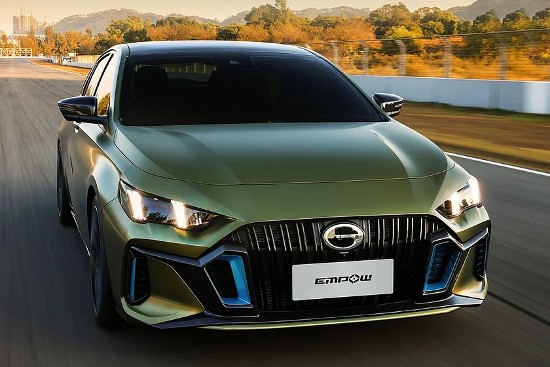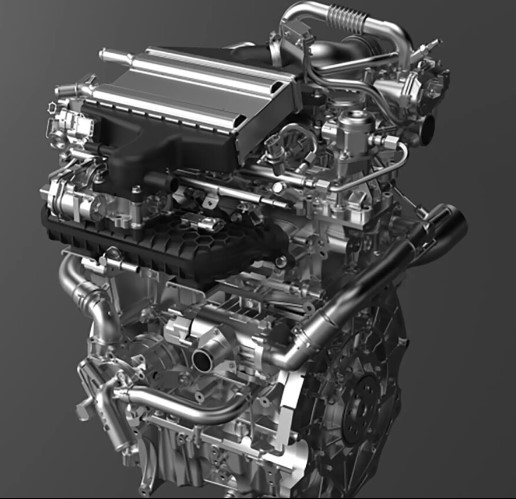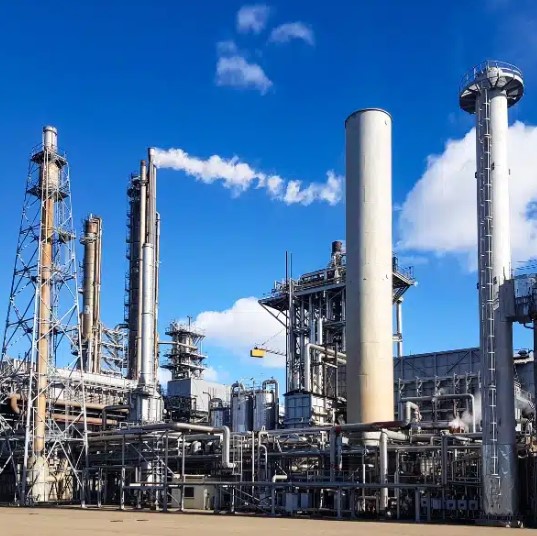When it comes to alternative fuel sources for cars, most people might think of electric or hydrogen-powered vehicles. But what about good old ammonia? Yes, that pungent, eye-watering chemical compound used in cleaning products and fertilisers could be the next big thing in motoring. Before you turn up your nose at the idea, let's take a closer look at why ammonia cars might just be the future of driving.
The Stinky Basics of Ammonia as a Fuel
Delving into the world of ammonia as a fuel necessitates a brief olfactory assault course. Yes, ammonia carries with it an odour that might have you reeling back in horror, reminiscent of a particularly aggressive cleaning spree or that one time you ventured too close to a farm's more fragrant quarters. Yet, if we can hold our breaths long enough to peer beyond its potent pong, we'll find that ammonia harbours a surprisingly hefty punch in the energy department.
This pungent powerhouse is no slouch when it comes to energy density. Imagine a fuel so potent that it can propel hefty lorries and buses along motorways without breaking a sweat. That's ammonia for you – a veritable Hercules in the realm of alternative fuels, ready to shoulder the heavy loads with ease. Its robustness makes it an intriguing contender in the race to power our future vehicles, offering a compelling blend of muscle and environmental consciousness.
But it's not just about brute force. The adaptability of ammonia stands out, particularly in how it mingles with the current automotive landscape. It's like that one friend who can seamlessly fit into any social circle. Ammonia doesn't demand the spotlight with the need for brand new engines or alien technologies. Instead, it sidles up to existing internal combustion engines, whispering sweet nothings about potential partnerships with conventional fuels. This ease of integration could very well smooth the path for ammonia, allowing it to infiltrate the motoring world with the subtlety of a gas...literally.
In this aromatic journey through the stinky basics of ammonia as a fuel, it becomes clear that the initial nose-wrinkling discomfort might just be worth enduring. After all, beneath that sharp exterior lies a fuel with the potential to muscle its way into the future of transportation, one whiff at a time.

It may not run on ammonia but there are plenty of great Toyota models for you - click here
Toyota is the world's largest automobile manufacturer, having pioneered the development of hybrid vehicles but, despite its innovation in hybrids, it has been cautious about fully committing to electric vehicles (EVs). The Mirai, the first commercial hydrogen fuel cell car, has seen limited success.
Related Content - Fuel for the future
Therefore, it's not surprising Toyota is exploring new fuel sources for ICE vehicles. Ammonia (NH3) contains no carbon atoms, meaning it can fuel vehicles with zero carbon emissions. Given its heavy investment in ICE technology, Toyota may view green ammonia fuel as a way to extend the life of ICE vehicles.
Compared to EVs, ammonia-powered vehicles could be easier to integrate into the existing transportation industry and supply chain, making them cheaper to produce and maintain. Green ammonia would make these cars as environmentally friendly as EVs.
Toyota owns 50% of Chinese vehicle manufacturer, the GAC Group. This year, they launched their first ammonia-powered model, a four-cylinder car that produces 120 kW with a minimal carbon footprint.
This is an impressive figure, especially for an engine designed to save fuel without using forced induction. For comparison, Toyota's current 2,0-litre engine produces 126 kW.

Pick your power - or go exotic
The Green Side of the Smelly Coin
Nestled amidst the nostril-twitching reputation of ammonia lies its lesser-known, eco-friendly persona. Yes, you read that right. The very same compound that evokes memories of vigorous spring cleans and the sharp tang of agricultural endeavours has a green thumb.
Through the marvels of modern science, ammonia can wave its sustainable wand, transforming itself from a mere household irritant to a beacon of environmental hope.
Harnessing the power of the wind and the sun, a process known as electrolysis cheekily splits water into hydrogen and oxygen, with the hydrogen then waltzing off to react with nitrogen to produce ammonia. This isn't your garden-variety chemical reaction, though. It's a green gala, where renewable energy sources take centre stage, dramatically cutting down the carbon footprint associated with traditional fuel production.
Imagine a world where cars whizz by, fuelled by the breezes and rays that grace our planet, all thanks to ammonia.
But let's not put our green-tinted glasses on just yet. While the potential for a sustainable love affair between ammonia and renewable energy is enough to make any environmentalist's heart flutter, the path to eco-bliss isn't devoid of hurdles. The process requires a hefty dose of electrical input, and ensuring this comes from genuinely renewable sources is crucial. After all, what's the point of a green fuel if it's powered by the same old dirty energy?
In this aromatic twist of fate, ammonia sheds its pungent persona, revealing a side that could very well turn the tide in our quest for a cleaner, greener future. It's a reminder that sometimes, the most promising solutions come from the most unexpected places. So, before dismissing ammonia as just another item on the cleaning shelf, it's worth taking a moment to appreciate the green potential hidden within its sharp embrace.
An Engine That Doesn’t Mind a Bit of Gas
Ammonia might just be the most sociable molecule on the block when it comes to mingling with the stalwarts of our current combustion engine society. Imagine this: a fuel that doesn’t bat an eyelid at the thought of cozying up with the likes of diesel or petrol, a real diplomat in the world of energy sources.
This is where ammonia, with its robust energy credentials, plays its trump card. The prospect of integrating ammonia into our existing motoring infrastructure without causing a scene (or demanding an overhaul) is akin to finding out your favourite pub snack can now be enjoyed guilt-free; it's a game-changer.
The mechanics of it are relatively straightforward, making scientists and engineers the mixologists of the motoring world. By tweaking the recipe slightly, ammonia can be blended with conventional fuels to create a cocktail that's not only potent but also cleaner. This could mean that the cars we drive today could be part of the ammonia revolution without so much as a grumble from under the bonnet.
It’s the equivalent of your car putting on a pair of spectacles and suddenly being able to speak multiple languages fluently.
The ease with which ammonia can waltz into the existing dance of internal combustion engines, without stepping on any toes, presents an enticing bridge to a more sustainable future. While electric vehicles continue to bask in the limelight, ammonia whispers from the wings, ready to play its part without demanding a complete rewrite of the script. It's an understated performance that, despite its lack of drama, could very well steal the show in the grand narrative of alternative fuels.
Sniffing Out the Challenges
Embarking on the ammonia journey isn't just about basking in its green glow and patting ourselves on the back for finding a cleaner fuel; oh no, it's a bit like deciding to adopt a pet skunk. There's undeniable charm and potential benefits, but also a fair share of challenges that could make your eyes water for all the wrong reasons.
First off, let's talk about the elephant in the room—or should we say, the giant tank of ammonia?
The infrastructure required to mass-produce, store, and wheel around this pungent elixir is no small feat. Imagine trying to convince every petrol station to start cuddling up to a tank of what's essentially a chemical with a bit of an attitude problem. And it's not just about space; it's about ensuring that these facilities can handle ammonia's diva demands with the grace and safety of a bomb disposal expert at a fireworks convention.
Then there's the delicate matter of handling. Ammonia, despite its potential as a green champion, has a toxic side that could give even the most robust safety protocols a run for their money. We're talking about a substance that doesn't play well with others, requiring the kind of care in handling usually reserved for rare artefacts or a soufflé in a busy kitchen.
So yes, the road to ammonia-fuelled nirvana is littered with logistical and safety hurdles, each demanding attention, investment, and a hefty dose of innovation. It's a bit like trying to train that pet skunk to do party tricks—possible, but it's going to take some work and probably a few mishaps along the way.
The Future Smells… Promising?
In the realm of motoring, where the quest for the next big thing never ceases, the prospect of ammonia as a fuel source wafts into the conversation with all the subtlety of its own distinctive scent. It's like suddenly discovering that the solution to a complex puzzle was hiding in plain sight, albeit tucked behind a somewhat formidable odour.
The narrative of ammonia-powered vehicles, once consigned to the margins of the automotive imagination, is beginning to sketch itself more boldly across the canvas of possibility.
The pathway ahead for ammonia isn't just strewn with rose petals (or should we say, ammonia molecules); it's a winding road, demanding innovation, investment, and a hearty dose of public and corporate willpower. The challenges are not insubstantial, akin to convincing a sceptical audience that, yes, a skunk can indeed play the lead role in a perfume advertisement. But, as history loves to remind us, the most groundbreaking shifts often come from the most unexpected quarters.
Imagine a future where the filling stations of old have metamorphosed into eco-friendly ammonia dispensing hubs, where the vehicles that zip and hum along our roads are powered by the very compound that once made us hold our noses. It's a vision that requires not just a leap of faith but a reorientation of our perceptions about what makes a fuel source viable, sustainable, and ultimately, desirable.
In this unfolding saga of ammonia as the unlikely hero of the motoring world, the plot is thickening. Engineers, environmentalists, and policy-makers are beginning to sniff around the potential that ammonia presents with a curiosity that borders on enthusiasm. The road ahead may have its share of bumps and twists, but if there's anything the exploration of ammonia as a fuel source underscores, it's that sometimes, the most promising opportunities are those that initially seem the most implausible.
Related Content - hydrogen production planned
Hive Hydrogen SA and Green Ammonia Projects
Hive Hydrogen SA, backed by Hive Energy and Built Africa, is establishing five large-scale hydrogen and ammonia plants in South Africa, powered by 15 GW of renewable energy. In 2021, they announced the establishment of a R83-billion Green Ammonia Plant at the Coega Special Economic Zone, near the Port of Ngqura.

Hive Energy plant
There is a significant surge in global demand for ammonia to meet agricultural, chemical, and mining needs. Green ammonia is also expected to become the preferred fuel in the maritime industry. Due to advancements in renewable energy, now is the ideal time to invest in this commodity.
Southern Africa is one of the few regions globally with optimal conditions for producing and exporting green hydrogen and ammonia. South Africa boasts world-class renewable resources, excellent harbours and a high standard of local expertise, making it an ideal location for green hydrogen and ammonia plants.
Located in Nelson Mandela Bay, the plant will produce 900 000 tons of green ammonia annually. This green ammonia will be exported to markets in the Far East, Europe and the USA.
Colin Windell
Proudly CHANGECARS











